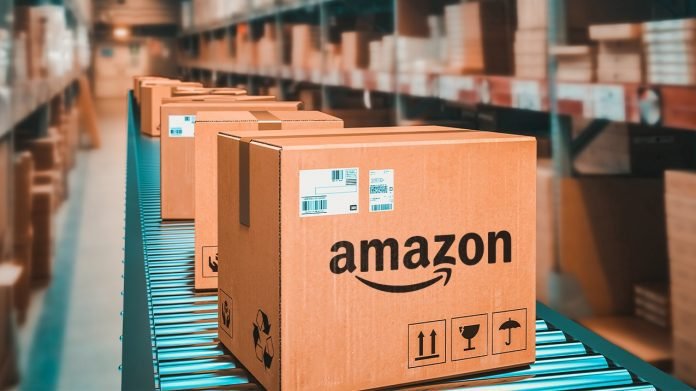Last Updated on February 16, 2024 by Saira Farman
With a whopping 37.8% share of the U.S. e-commerce market (the next entity is at 6.3%), Amazon is undeniably the leading online retailer in the country. Millions of enterprises, retailers, and entrepreneurs sell products on Amazon, and millions more purchase from them.
When you look at these numbers from the lens of a reseller, it means Amazon has the highest scope in terms of product returns.
But where do all those returned Amazon products go? Can you purchase, refurbish, and resell them for profit?
If these are questions you’ve asked yourself, you’ve come to the right place. This guide outlines everything you need to know about how and where you can buy Amazon return pallets.
Table of Contents
The Amazon Returns Pallets Business
Amazon accepts returns for some products under certain conditions. Unlike brand new goods, returned products cannot be sold as fresh again, even if the package has not yet been opened. Reopening, repackaging, and restocking these items is a time-consuming and expensive process for Amazon, given the sheer number they receive each day.
This is why they sell these goods as returned pallets at rock-bottom prices. They must get rid of them quickly to make up for the losses, clear inventory, and retain space for brand-new items.
Most of the products that end up in these returned pallets are still fully functional and usable, and the market for these good-quality items amongst the pallets is huge. Resellers purchase these pallets at lower wholesale prices and sell the items on various platforms.
If you want to buy these goods and try flipping them for profit, there are specific places you need to look.
Where and How Can You Buy Amazon Return Pallets?
Here are the different options for sourcing Amazon return pallets:
Online Liquidation Marketplaces
Amazon sells returns pallets to online liquidation marketplaces such as Direct Liquidation. These marketplaces are easily accessible and reliable, and most importantly, they sell these pallets at affordable prices.
In general, liquidation marketplaces are your best bet for making the highest profits on Amazon pallets—prices are low, and the quality of goods is high.
Before you settle on a liquidator, consider their shipping costs. Most liquidators will offer big discounts or free shipping if you buy pallets in bulk.
Amazon Warehouse and Liquidations Auctions
Amazon warehouse or liquidation auctions are great options for highly experienced resellers determined to get top-quality pallets at the lowest possible price. Before you can bid, you need to register and get approval from the auction house.
Warehouse Liquidations
Warehouse liquidations are a good option if your priority is to save on shipping charges. You can visit these auctions physically and make plans to transport the pallets you buy. It can be quite time-consuming and not as convenient as online marketplaces, but you can keep a close eye on your merchandise.
Vendors
You can also buy Amazon return pallets from vendors or middlemen. Vendors often buy pallets from Amazon and refurbish and repackage the products to sell them at a profit. Unfortunately, these pallets are priced considerably higher, which lowers their profit potential.
What to Expect From an Amazon Returns Pallet
Amazon pallets contain all types of returned products. They may be broken, used, opened, unopened, missing some parts, etc.
Depending on which type of pallet you choose to buy, here’s what you can expect:
Mystery Pallets
If you buy a mystery pallet, you can expect to receive an unprocessed pallet. This means the buyer did not open or inspect its contents, so there is very little information on the products.
Manifest Pallets
Manifest pallets come with more information than mystery pallets. You can expect a detailed list of the products included. They are also graded based on the condition of their contents.
Here are some common truckload types you can expect from an Amazon return pallet:
● Bigs (large appliances, furniture, and other large merchandise)
● Smalls (small merchandise such as watches, sunglasses, and other personal accessories)
● High-retail (containing best-selling retail items)
● Clothing (all types of clothing items)
We recommend going for manifested pallets from liquidators because they provide a lot of information about the products you can expect. Sometimes they also provide pictures of the products in the pallet. When you know what the pallets contain, you make intelligent purchasing decisions and calculate the profits you stand to make.
How to Make Money From Amazon Returns Pallets?
Amazon return pallets can cost anywhere between $100 and $10,000, depending on the pallet size and minimum order quantity. These pallets contain multiple items and are often sold at prices lower than wholesale, which is how resellers earn their profits.
While you may not be able to sell all products at top dollar, you should be able to unload most of them and earn a bit of profit.
Based on the product conditions, you can sell them online, at a discount store, or a flea market. Some broken, damaged, or opened products can be refurbished or repaired and sold to local buyers or enthusiasts.
You can also bundle certain products to create a marketable package to get more than your money’s worth.
Here are some strategies to make money from Amazon returns pallets:
● Buy pallets that contain products you are familiar with
● Buy pallets by the truckload
● Purchase locally to save on shipping expenses
● Compare prices offered by various suppliers and consider extra charges
● Try to buy new, unopened products with the highest grade
● Buy from reputable suppliers with many positive reviews
● Repackage the products to boost the marketability
● Sell products on multiple platforms
● Avoid buying used products for your first purchase
If you end up with pallets containing products that cannot be sold, you can donate them to local shelters instead of throwing them away.
Understanding Amazon Return Pallets and How to Deal with Them
Amazon, being one of the largest online retailers in the world, handles millions of orders every day. However, with such a high volume of transactions, it’s inevitable that some products will be returned. These returned items are often collected on pallets and sold to liquidation companies, reselling them to other businesses or individuals. These pallets are known as Amazon return pallets.
Amazon return pallets can contain a wide range of items, from electronics and clothing to toys and kitchenware. The contents of the pallets can vary greatly, and they may include items that are new, used, or damaged. As a result, buying Amazon return pallets can be a bit of a gamble. Some of the items may be in good condition and can be sold for a profit, while others may be damaged or unsellable.
If you’re interested in buying Amazon return pallets, it’s important to do your research and understand what you’re getting into. You should work with a reputable liquidation company and carefully inspect the pallets before purchasing. Some liquidation companies will allow you to view the contents of the pallets before buying them, while others may only provide a general description of what’s included.
In conclusion, Amazon return pallets can be a great way to buy products at a discounted price, but they do come with some risks. If you’re willing to do your research and carefully inspect the pallets, you may be able to find some great deals and make a profit selling the items.
Conclusion
With an exponentially growing e-commerce industry, the number of returned goods also grows. And so does the scope to earn profits by flipping liquidation pallets.
If you’re looking for a low-risk business idea or side gig, flipping Amazon return pallets is a fantastic option. We hope this guide can help you find the best pallets to build your inventory.
Apart from that, if you want to know about 7 Technical Features to Consider When Looking for An Invoicing Software then please visit our Technology page
















